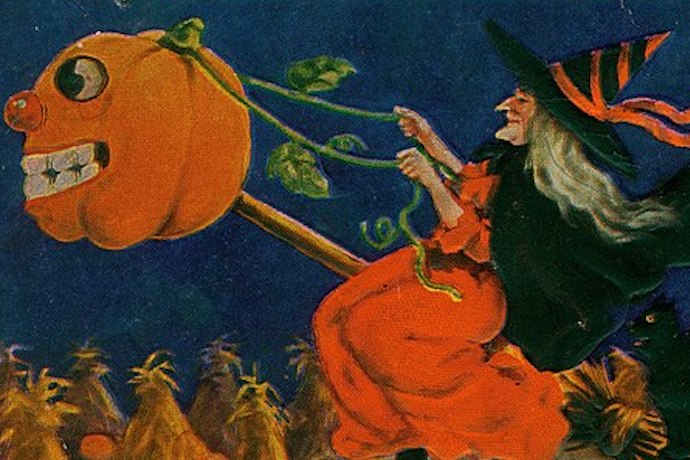By Billy Sooley
Witches are symbolic figures in classical music: canvasses onto which composers can project a multitude of fears and desires. They are depicted as figures of transformation, fear, potency, playfulness, folklore, paranoia and power, twisted romance and malevolent chaos. An emblem of the dissolving boundary between rational civilisation and a mysterious unknown, they often reflect artistic and societal views of women, the supernatural, religion, and much more. Here are five pieces of classical music inspired by witches.

Freya Waley Cohen’s WITCH
Freya Waley’ Cohen’s one act 2022 opera, consisting of a modern chamber orchestra and 10 singers, interweaves the story of Jane, a witch condemned for her craft in 1590, and Sarah, a modern teenager who finds community and self-definition in discovering an online coven in her bedroom. Both these protagonists are navigating the parallel yet different implications of what it means to be powerful women in their time. Freya Waley-Cohen’s orchestra is in direct conversation with Rebecca Tamas’s poetry collection ‘Witch’, drawing inspiration from Tamas’s poetic focus on liminality, and “’what happens in, between and around the glinting membrane of the world’, which to Cohen is a metaphor for the way in which music and poetry have the power to bridge the divide between our understanding of rationality, and the more intangible realms of supernatural mystique. In doing so, Cohen examines the practice of alienating and othering things that are considered strange, powerful and irrational. She makes an influential feminist statement by deconstructing the fear and othering that is projected onto powerful women, and the way in which a woman’s possession of power feels inextricably tethered to moral condemnation.
Giuseppe Verdi’s ‘Witches’ Chorus’ from Macbeth
With its chant-like singing, reminiscent of a spell, this is one of the most iconic pieces of classical music inspired by witches, evoking an extremely ominous atmosphere. It is defined by extreme musical oscillation, and a continual rising and falling that conveys a sense of danger. Through his use of extreme musical contrast, Verdi explores the many varying, and often contradictory, social associations that we hold of witches, taking the listener on a perceptual journey about these supernatural beings, and eluding simplistic categories of ‘good’ or ‘evil’.
Hector Berlioz’s ‘Dream of a Witches’ Sabbath’ from Symphonie Fantastique
Continuing our theme of classical music inspired by witches.: Berlioz’s five section symphony of 1830 details the opium-induced hallucinations of a man who has poisoned himself as a result of his unrequited love for a mystical and beautiful woman. The protagonist’s hallucinations allow him to traverse a dreamlike realm, travelling from a ball, to a rural field and finally to an execution site in which he witnesses a witches’s Sabbath, a satanic meeting held at midnight. Throughout this final movement, the central idée fixe of Berlioz’s piece – a recurring melody that represents his romantic obsession – becomes entangled with a sense of satanic discordance, blurring the boundary between idolisation and demonisation of women.
- Watch: A narration of Hansel and Gretel with classical music
- Read: Music inspired by dreams | 5 of the best pieces
Nicòlo Paganini’s The Witches’ Dance
This 1813 piece is playful enough, but with plenty of unsettling features: swift modulations from minor to major, abrupt juxtapositions of mood, and a constant interplay between light shadow. The result is a compelling narrative that invites us to be immersed into a magical and haunting world.
Wolfgang Amadeus Mozart’s ‘The Queen of The Night’ aria from The Magic Flute
Concluding our list of classical music inspired by witches: the notorious witch of Mozart’s ‘1791 ’ opera, the Queen of The Night is a figure associated with murder and manipulation, goading her daughter Pamina into murduring her enemy Sarastro. She is a figure that is often speculated to be a projection of the misogynistic fears harboured by men in Mozart’s time, a powerful figure of vengeful rage who is lent an air of indestructibility by her supernatural form.